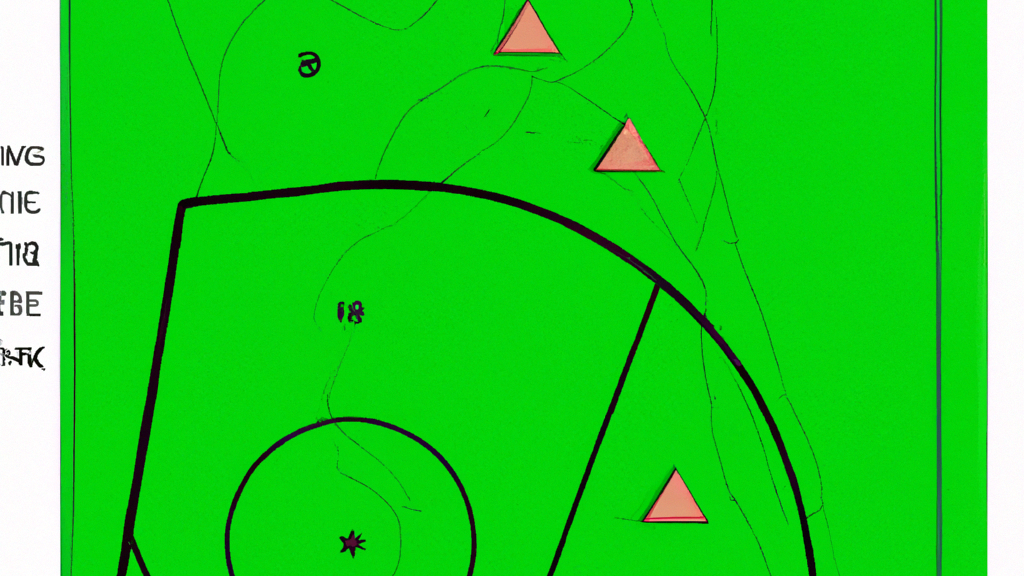GOLF COURSE MANAGEMENT: A GUIDE TO DEALING WITH EROSION
Golf courses are a beautiful and serene place to spend a day, but they require a lot of maintenance to keep them in top condition. One of the biggest challenges that golf course managers face is erosion. Erosion can cause damage to the course, make it difficult to play, and even pose a safety hazard to golfers. In this guide, we will explore the best practices for dealing with erosion on a golf course.
From identifying the causes of erosion to implementing effective erosion control measures, we will cover everything you need to know to keep your course in top condition. Whether you are a golf course manager, a golfer, or simply someone interested in the world of golf, this guide is a must-read. So, let’s dive in and learn how to manage erosion on a golf course!

GOLF COURSE MANAGEMENT: A GUIDE TO DEALING WITH EROSION
Golf courses are a beautiful and serene place to spend a day, but they require a lot of maintenance to keep them looking their best. One of the biggest challenges that golf course managers face is erosion. Erosion can cause damage to the course, create safety hazards, and impact the overall aesthetic of the course. In this guide, we will explore the causes of erosion on golf courses and provide tips for managing it effectively.
What Causes Erosion on Golf Courses?
Erosion is the process of soil and rock being moved from one place to another by wind, water, or other natural forces. On golf courses, erosion can be caused by a variety of factors, including:
- Heavy Rainfall: When there is heavy rainfall, the water can wash away the top layer of soil, leaving the roots of the grass exposed. This can cause damage to the grass and make it difficult for it to grow back.
- Slopes: Golf courses are often built on sloping terrain, which can make them more susceptible to erosion. When water runs down a slope, it can pick up speed and force, which can cause it to erode the soil and carry it away.
- Foot Traffic: Golfers walking on the course can also contribute to erosion. When golfers walk on the same area repeatedly, it can wear down the grass and soil, making it more susceptible to erosion.
- Poor Drainage: If the course has poor drainage, water can accumulate in certain areas, causing erosion. This can also lead to standing water, which can create safety hazards for golfers.
How to Manage Erosion on Golf Courses
Plant Grasses and Shrubs: One of the best ways to prevent erosion on golf courses is to plant grasses and shrubs. These plants help to anchor the soil in place and prevent it from being washed away. They also help to absorb water, which can reduce the amount of runoff.
Install Drainage Systems: If the course has poor drainage, it is important to install drainage systems to prevent standing water. This can include French drains, catch basins, and other types of drainage systems.
Use Mulch and Compost: Mulch and compost can help to improve the soil quality and prevent erosion. They also help to retain moisture, which can reduce the amount of runoff.
Limit Foot Traffic: To prevent erosion caused by foot traffic, it is important to limit the number of golfers on the course. This can be done by scheduling tee times and limiting the number of golfers on the course at any given time.
Build Retaining Walls: Retaining walls can be used to prevent erosion on slopes. They help to hold the soil in place and prevent it from being washed away.
Use Erosion Control Blankets: Erosion control blankets can be used to prevent erosion on newly seeded areas. These blankets help to hold the soil in place and prevent it from being washed away.
Monitor the Course: It is important to monitor the course regularly for signs of erosion. This can include bare spots, standing water, and other signs of damage. By catching erosion early, it is easier to prevent it from spreading and causing more damage.
Conclusion
Erosion is a common problem on golf courses, but it can be managed effectively with the right strategies. By planting grasses and shrubs, installing drainage systems, using mulch and compost, limiting foot traffic, building retaining walls, using erosion control blankets, and monitoring the course regularly, golf course managers can prevent erosion and keep their courses looking their best. With these tips, golfers can enjoy a beautiful and well-maintained course for years to come.

- Managing Golf Course Ponds Without Traditional Herbicides
Golf Course Pond Management. Golf Course management erosion control services – golf course ponds – west coast – california – … - A guide to managing coastal erosion in beach/dune systems
Present day dune management in Scotland is undertaken by various groups, including local land owners, golf clubs, the Unitary Councils, Scottish Natural … - Urban Runoff: Model Ordinances to Prevent and Control Nonpoint …
Jun 3, 2022 … The ordinance types listed below include matters that are often forgotten in many local codes including aquatic buffers, erosion and sediment … - INDOT Storm Water Management Field Guide
Preventing erosion is more efficient and cost effective than managing sediment after it begins to be transported by storm water. Keeping soil in its place with … - Massachusetts Erosion and Sediment Control Guidelines for Urban …
This guide deals primarily with conservation measures and conservation practices. These practices are generally referred to as “Best Management Practices” or “ … - Environmental Management Practices for Golf Courses
Meet applicable state/provincial and federal regulations for chemical storage, handling, application, and disposal. • Train maintenance staff in the basic … - A Guide To Selecting The Right Bunker Sand For Your Course
Jun 5, 2020 … Erosion potential of various golf course bunker sands. Abstracts: 2007 International Annual Meetings (ASA/CSSA/SSSA). Owen, A.G., A.R. … - Erosion Control & Stormwater Management | Fond du Lac County
The purpose of this ordinance is to set the requirements for land development and land disturbing activities aimed to minimize sedimentation, water pollution, … - NPS BMP Manual, Other BMP Design References, and Pollutants …
EGLE Nonpoint Source Best Management Practices Manual … Golf Courses: Natural Resource Protection Strategy for Michigan Golf Courses (v1995) (1.3 MB) … - Technical Guidance | Georgia Soil and Water Conservation …
If you are a certified Erosion and Sediment Control Design Professional or Plan Preparer in Georgia, please review the following information to ensure that …
Interesting tidbits about Golf Course Management: A Guide to Dealing with Erosion
- The first recorded game of golf was played in Scotland in the 15th century.
- Golf is one of only two sports to have been played on the moon (the other being javelin).
- The Masters Tournament, held annually at Augusta National Golf Club, has a tradition where the winner receives a green jacket.
- Tiger Woods is considered one of the greatest golfers of all time and has won 82 PGA Tour events, tied for most all-time with Sam Snead.
- In 2016, golf was added back into the Olympics after a 112-year absence from competition.
- Caddies were originally used to carry clubs for players but now also provide advice and strategy during rounds.
- Arnold Palmer popularized “Arnold Palmer” drinks which are half lemonade and half ice tea mixed together as his favorite beverage on hot days while playing golf





